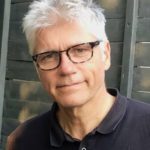Link to Pubmed [PMID] – 28985409
Nucleic Acids Research (2017) 45(18):10555-10563. doi: 10.1093/nar/gkx670
Biologically functional DNA hairpins are found in archaea, prokaryotes and eukaryotes, playing essential roles in various DNA transactions. However, during DNA replication, hairpin formation can stall the polymerase and is therefore prevented by the single-stranded DNA binding protein (SSB). Here, we address the question how hairpins maintain their functional secondary structure despite SSB’s presence. As a model hairpin, we used the recombinogenic form of the attC site, essential for capturing antibiotic-resistance genes in the integrons of bacteria. We found that attC hairpins have a conserved high GC-content near their apical loop that creates a dynamic equilibrium between attC fully opened by SSB and a partially structured attC-6-SSB complex. This complex is recognized by the recombinase IntI, which extrudes the hairpin upon binding while displacing SSB. We anticipate that this intriguing regulation mechanism using a base pair distribution to balance hairpin structure formation and genetic stability is key to the dissemination of antibiotic resistance genes among bacteria and might be conserved among other functional hairpins.

